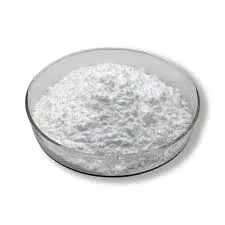
ഒക്ട് . 13, 2024 22:40 Back to list
hpmc vs hec
HPMC vs HEC A Comparative Analysis
Hydroxypropyl Methylcellulose (HPMC) and Hydroxyethyl Cellulose (HEC) are both non-ionic cellulose derivatives commonly used in various industries, including pharmaceuticals, food, and cosmetics. While they share some similarities due to their cellulose origin, they exhibit distinct properties and applications that can significantly influence product formulation and performance.
Chemical Structure and Properties
HPMC is synthesized through the modification of cellulose with hydroxypropyl and methyl groups. This process results in a compound with increased water solubility and viscosity, making it a versatile agent for thickening, binding, and film-forming. HPMC is known for its ability to form clear solutions and gels, which is crucial in applications where transparency and stability are essential.
On the other hand, HEC is derived from the etherification of cellulose with hydroxyethyl groups. This modification provides HEC with excellent water retention and improves its ability to swell in water, ultimately leading to effective thickening and stabilization properties. HEC is particularly favored in formulations where high viscosity is required without the need for a significant increase in solid content.
Applications
Both HPMC and HEC are extensively used in the pharmaceutical industry. HPMC is a popular excipient in tablet formulations, serving as a binder and controlling the release of active pharmaceutical ingredients (APIs). Its film-forming capabilities make it ideal for coating tablets, ensuring drug stability and improved bioavailability.
hpmc vs hec

In contrast, HEC is often utilized in topical formulations, such as gels and creams, due to its superior water retention properties. It helps maintain moisture in the skin, enhancing the overall efficacy of cosmetic products. HEC's ability to create a stable, smooth texture makes it a preferred choice for applications that require a silky feel without greasiness.
Performance Characteristics
One of the primary differences between HPMC and HEC lies in their performance characteristics. HPMC generally provides a more stable viscosity across various pH levels and temperatures, making it suitable for applications subject to fluctuating conditions. Its superior film-forming properties also contribute to its effectiveness in controlled-release formulations.
Conversely, HEC's excellent solubility and thickening ability are particularly advantageous in aqueous systems. However, HEC's viscosity can be more sensitive to changes in pH, which may limit its use in certain formulations. Additionally, while both cellulose derivatives are non-toxic and biodegradable, HPMC often has a broader regulatory acceptance in pharmaceutical applications.
Conclusion
In summary, while HPMC and HEC share a common origin as cellulose derivatives, their distinct chemical structures lead to varying properties and applications in diverse industries. HPMC stands out for its film-forming ability and stability, making it ideal for pharmaceutical excipients and coatings. HEC, with its exceptional thickening and water retention properties, excels in personal care and topical formulations. Understanding these differences is crucial for formulators seeking to optimize their products for specific applications, ensuring both efficacy and consumer satisfaction. The choice between HPMC and HEC ultimately depends on the specific requirements of the formulation and the desired end-use characteristics.
-
The Widespread Application of Redispersible Powder in Construction and Building Materials
NewsMay.16,2025
-
The Widespread Application of Hpmc in the Detergent Industry
NewsMay.16,2025
-
The Main Applications of Hydroxyethyl Cellulose in Paints and Coatings
NewsMay.16,2025
-
Mortar Bonding Agent: the Key to Enhancing the Adhesion Between New and Old Mortar Layers and Between Mortar and Different Substrates
NewsMay.16,2025
-
HPMC: Application as a thickener and excipient
NewsMay.16,2025
-
Hec Cellulose Cellulose: Multi functional dispersants and high-efficiency thickeners
NewsMay.16,2025







